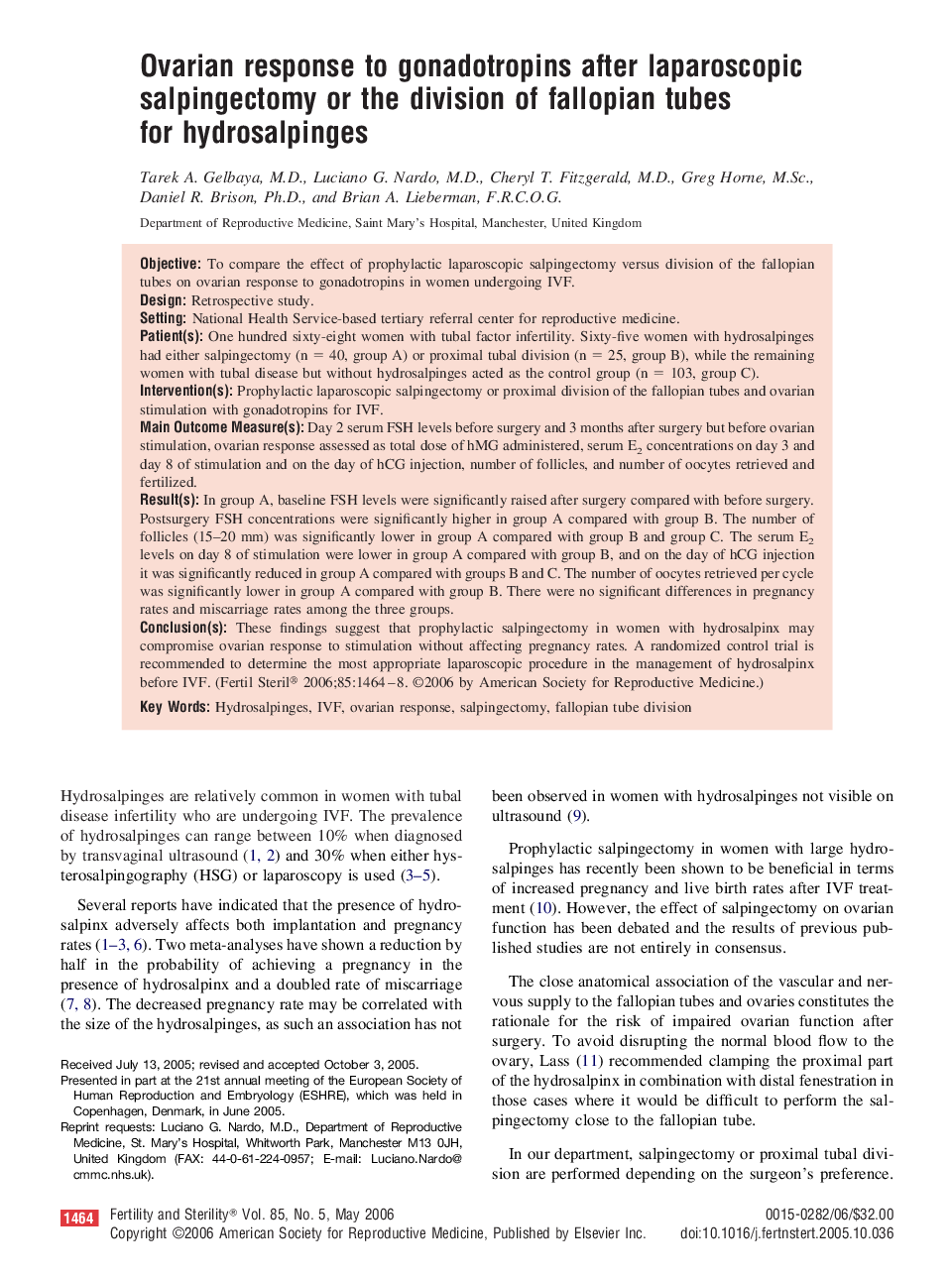| Article ID | Journal | Published Year | Pages | File Type |
|---|---|---|---|---|
| 3942310 | Fertility and Sterility | 2006 | 5 Pages |
ObjectiveTo compare the effect of prophylactic laparoscopic salpingectomy versus division of the fallopian tubes on ovarian response to gonadotropins in women undergoing IVF.DesignRetrospective study.SettingNational Health Service-based tertiary referral center for reproductive medicine.Patient(s)One hundred sixty-eight women with tubal factor infertility. Sixty-five women with hydrosalpinges had either salpingectomy (n = 40, group A) or proximal tubal division (n = 25, group B), while the remaining women with tubal disease but without hydrosalpinges acted as the control group (n = 103, group C).Intervention(s)Prophylactic laparoscopic salpingectomy or proximal division of the fallopian tubes and ovarian stimulation with gonadotropins for IVF.Main Outcome Measure(s)Day 2 serum FSH levels before surgery and 3 months after surgery but before ovarian stimulation, ovarian response assessed as total dose of hMG administered, serum E2 concentrations on day 3 and day 8 of stimulation and on the day of hCG injection, number of follicles, and number of oocytes retrieved and fertilized.Result(s)In group A, baseline FSH levels were significantly raised after surgery compared with before surgery. Postsurgery FSH concentrations were significantly higher in group A compared with group B. The number of follicles (15–20 mm) was significantly lower in group A compared with group B and group C. The serum E2 levels on day 8 of stimulation were lower in group A compared with group B, and on the day of hCG injection it was significantly reduced in group A compared with groups B and C. The number of oocytes retrieved per cycle was significantly lower in group A compared with group B. There were no significant differences in pregnancy rates and miscarriage rates among the three groups.Conclusion(s)These findings suggest that prophylactic salpingectomy in women with hydrosalpinx may compromise ovarian response to stimulation without affecting pregnancy rates. A randomized control trial is recommended to determine the most appropriate laparoscopic procedure in the management of hydrosalpinx before IVF.
